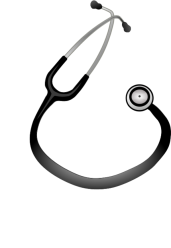The Problem: Providers are Unable to Bill for Their Time Spent using the Patient Portal

I know many providers who spend tons of time responding to patient messages through the patient portal. I have mentioned this concept in previous blog posts, but just the other day I was talking with a provider who says he reserves at least 1 hour each night, if not more, after his office hours, to read the large volume of messages he receives from patients. Often these messages are detailed and require multiple messages to and from the patient to deal with the problem. However, this provider, similar to so many others, is unable to receive any type of monetary compensation for such communication, although this communication is being tracked and is a measure that will determine the facility’s or providers’ meaningful use of health technology. The solution to this problem, giving providers reimbursement for their time spent communicating with patients through the patient portal, requires innovation and change agents!
When I first started the doctoral program at ASU, I was unfamiliar with the words innovation, innovator, and innovative. I mean, I knew the basics of such terms, but boy has my mind been opened over these past 3 years! Here’s a bit of what I’ve learned and what I think.
Innovation is the introduction of change, but based on evidence or experience (Crenshaw & Yoder, 2013). It is not an invention, nor is it not necessarily new ideas. It is more likely new organization of old ideas. Furthermore, it is the application of an idea or a process to make change (Unterschuetz, Hughes, Nienhauser, Weberg, & Jackson, 2008). So the first characteristic of an innovator and change agent would be one who recognizes the need for change and is able to combine the current method with slight tweaking in order to meet the needed change.
Innovation is observation fueled by humans to create change. It is ideas combined with action, but it takes perseverance. One cannot expect results overnight, and it is a “continuous spirit of creative evolution” (Kelley, 2005). It creates a disruption in the current way of doing things, and this makes some people uncomfortable (Jaramillo, et al., 2008). As a nurse, I have seen the effect disruption can have on a work setting; making innovation difficult if others are not willing to make the change. Thus, the second characteristic of an innovator and change agent would be one who is a hard worker, never allowing barriers to prevent the change from happening. I think that a change agent has to be a really good leader, with the ability to persuade others to the importance of the change.
Innovation requires risk, not only the risk related to whether or not the change is good or bad, but risk to the leader who needs to have power to redefine from what was being done to what is now the goal (Unterschuetz, Hughes, Nienhauser, Weberg, & Jackson, 2008). Therefore, another characteristic of an innovator and change agent is one who views that change as important enough for the risk; one who remains levelheaded and perseveres.
Leadership is no longer a dictatorship, but is a team-focused effort (Davidson, 2010). Therefore, lastly, another characteristic of an innovator and change agent is one who works as a team player, who values the insight and opinion of others in order to create an influential and sustainable innovative change.
“Leadership is not a job description; rather, it is influencing others to contribute to a positive outcome” (Byram, 2000).
In order for the positive outcome, or change, to happen – providers to have the opportunity to bill for their communication with patients through the patient portal – I need to be the innovative change agent and group myself with others who are invested in this problem. Besides the associations that support providers, as mentioned in a previous post, with what other innovative change agents can I join forces?
References
Byram, D.A. (2000). Leadership: A skill, not a role. AACN Clinical Issues: Advanced Practice in Acute & Critical Care, 11(3), 463-469.
Crenshaw, J.T., & Yoder, P.S. (2013). Creating an environment for innovation: The risk-taking leadership competency. Nurse Leader, 11(1), 24-27.
Jaramillo, B., Jenkins, C., Kermes, F., Wilson, L. Mazzocco, J., & Longo, T. (2008). Positive deviance: Innovation from the inside out. Nurse Leader, 6(2), 30-34.
Kelley, T. (2005). The ten faces of innovation. New York, NY: Doubleday.
Unterschuetz, C., Hughes, P., Nienhauser, D., Weberg, D., & Jackson, L. (2008). Caring for innovation and caring for the innovator. Nursing Administration Quarterly, 32(2), 133-141.
















